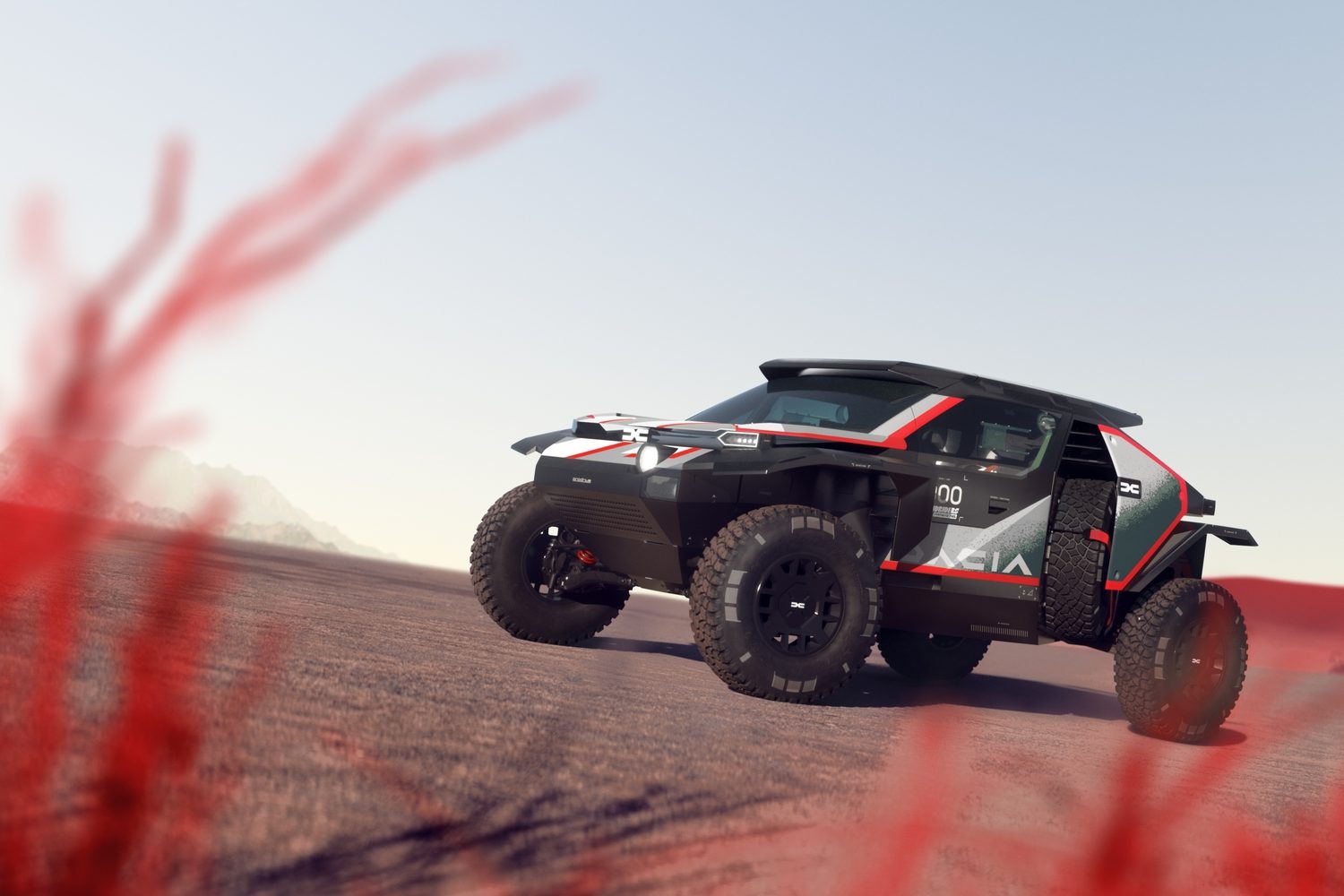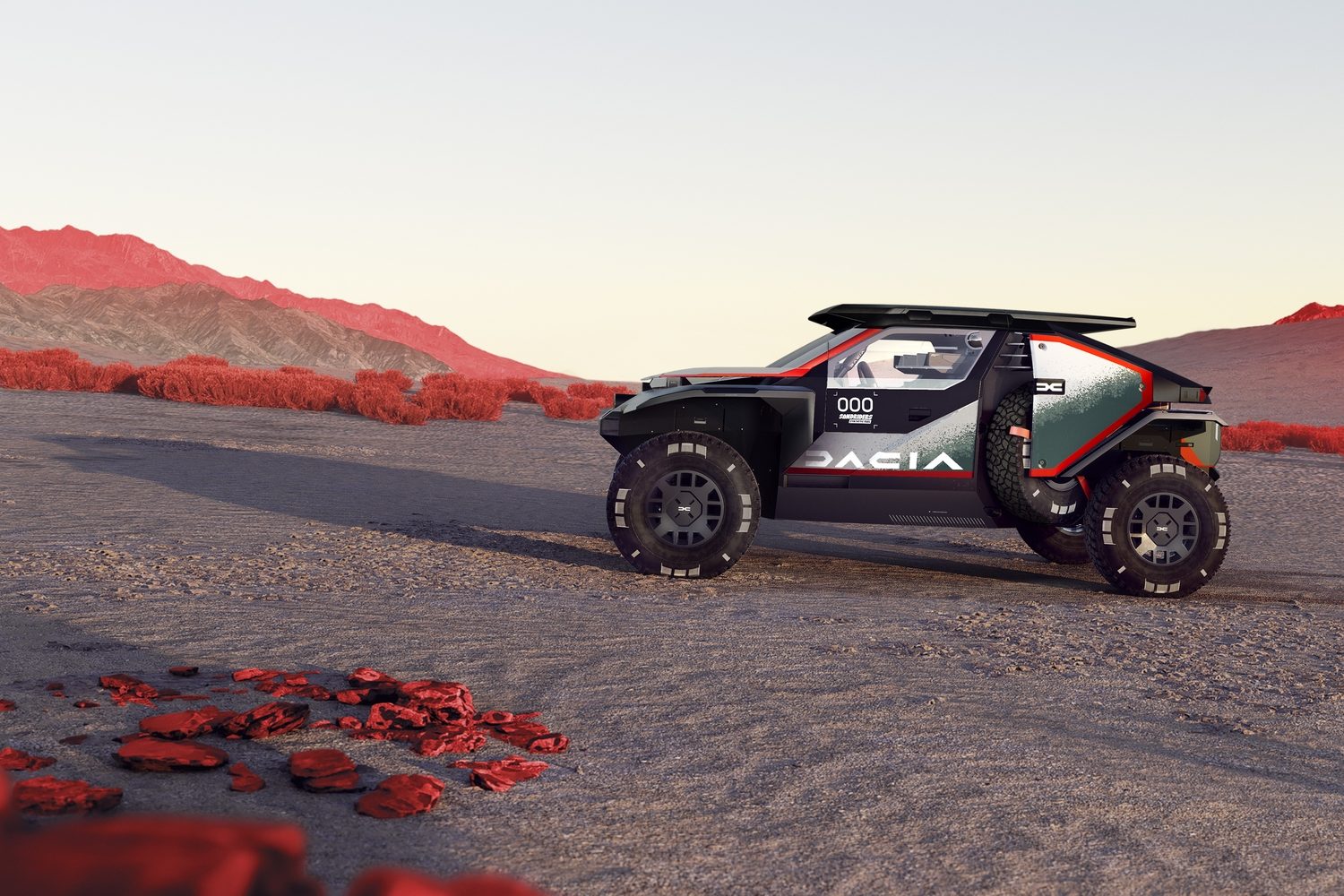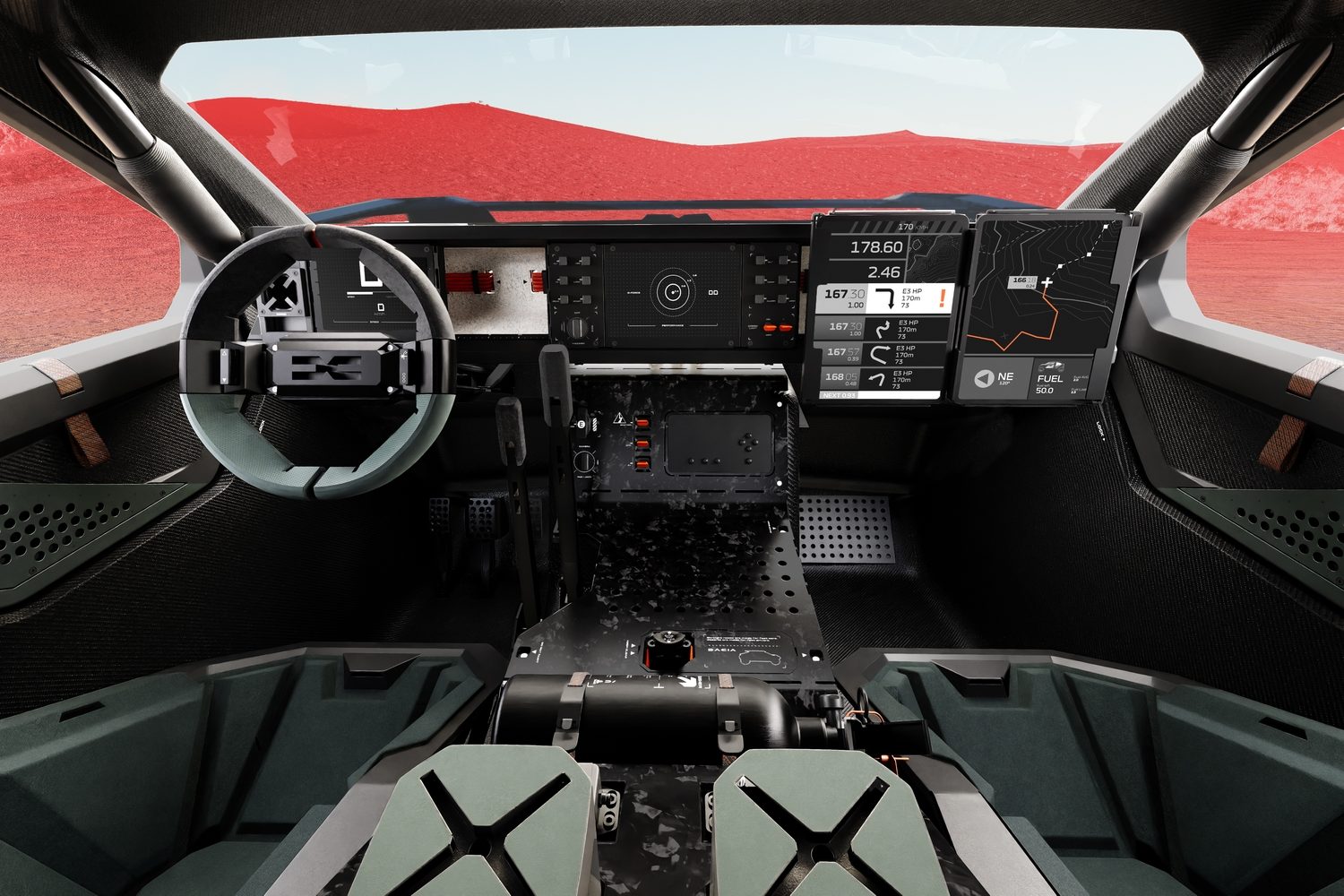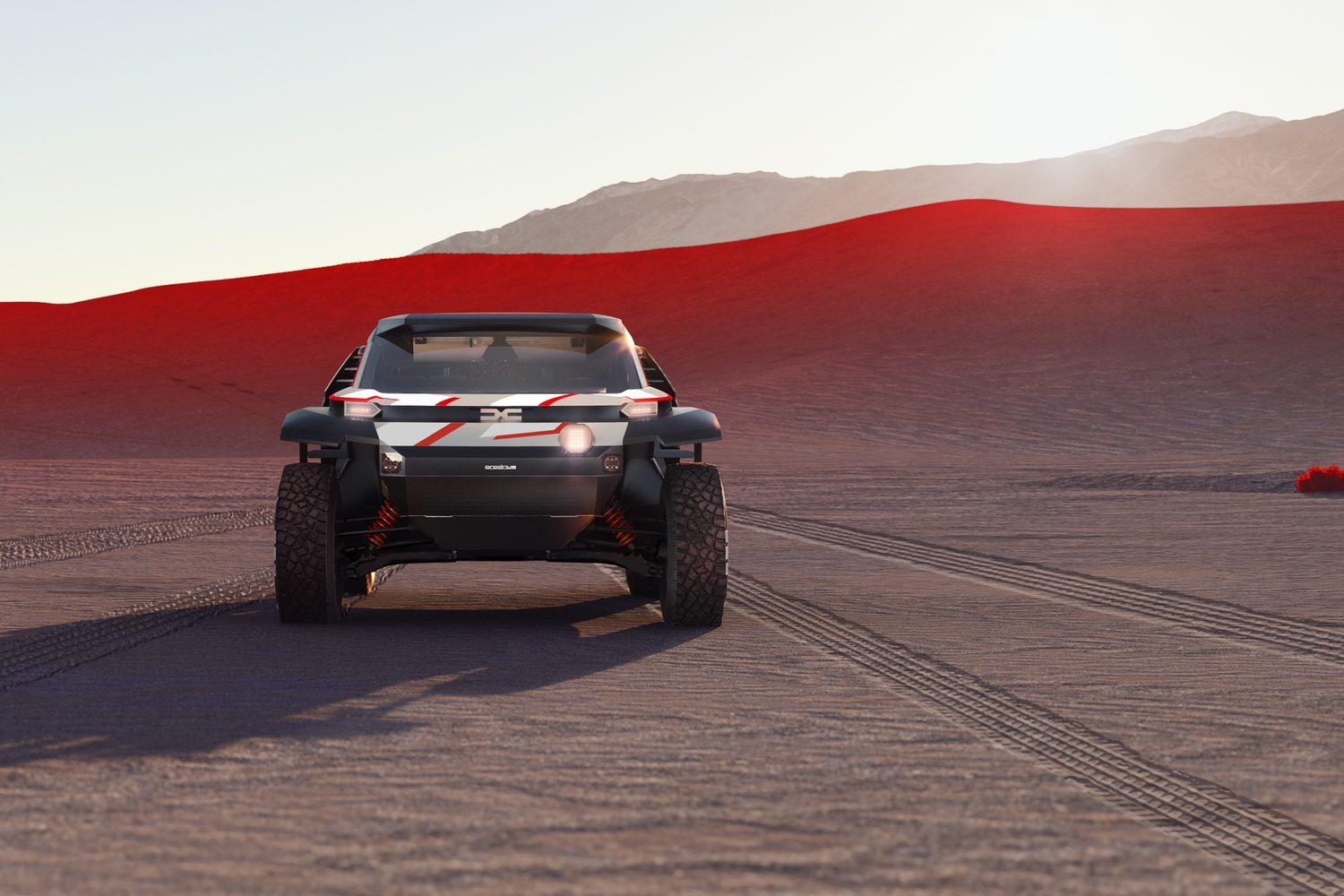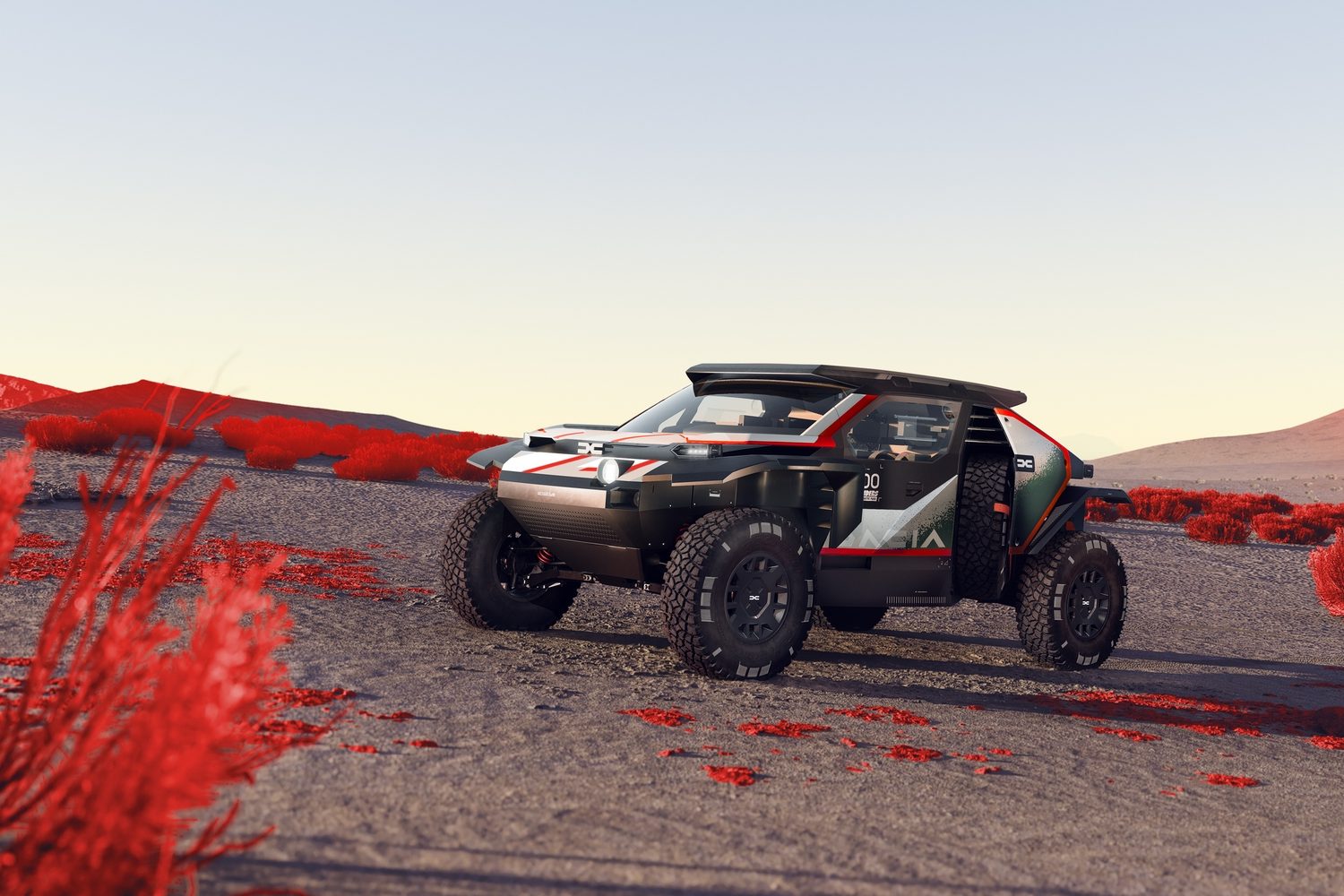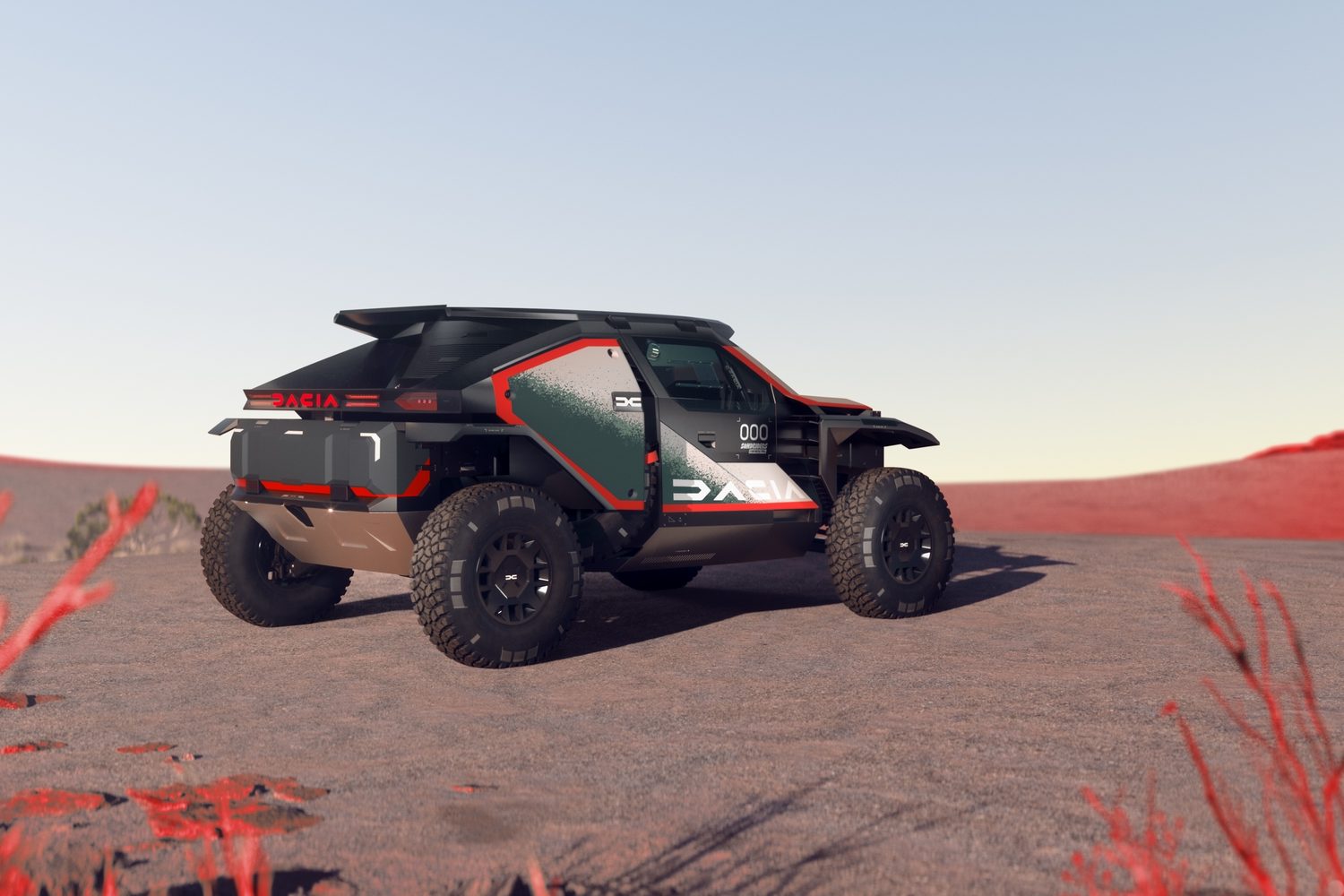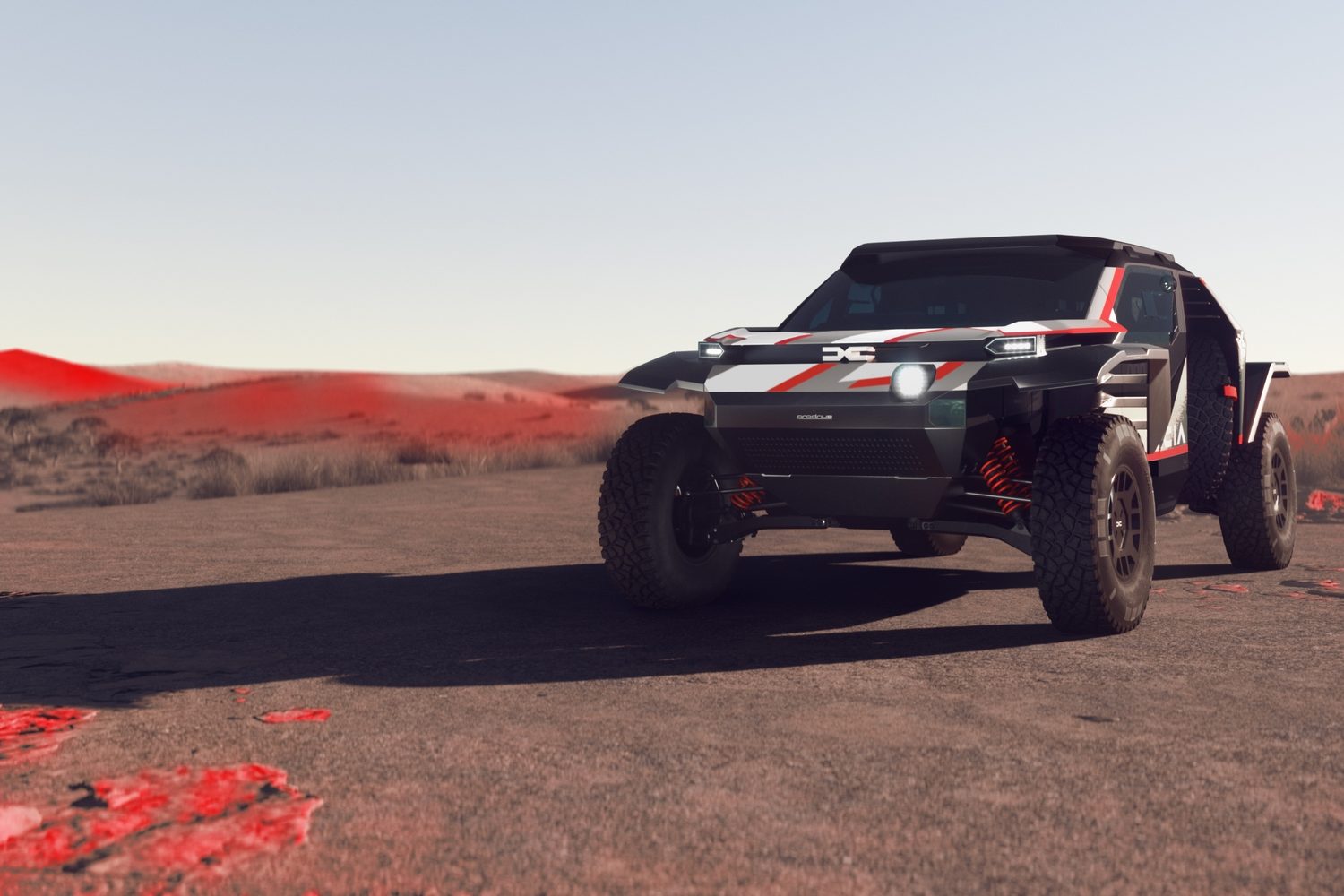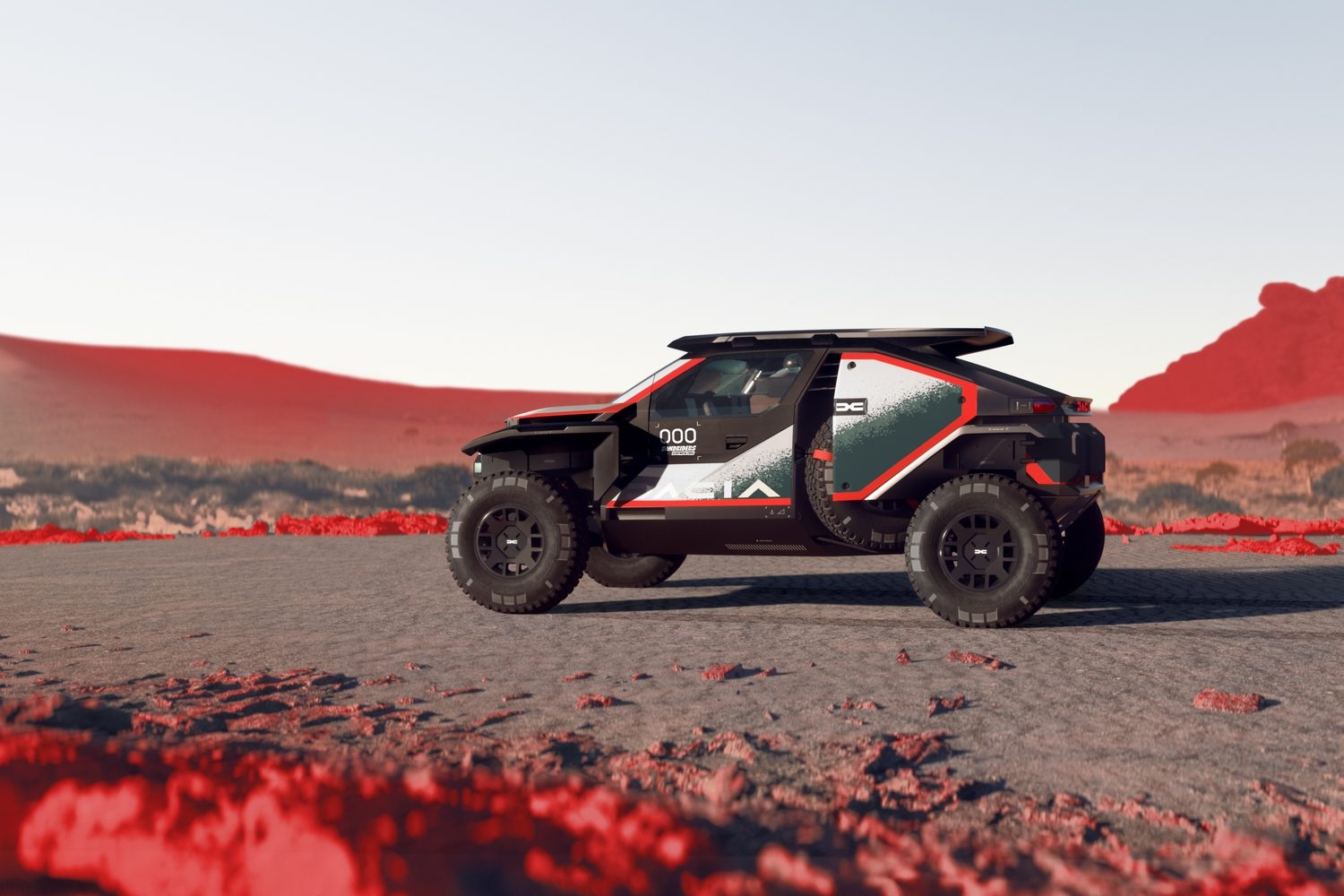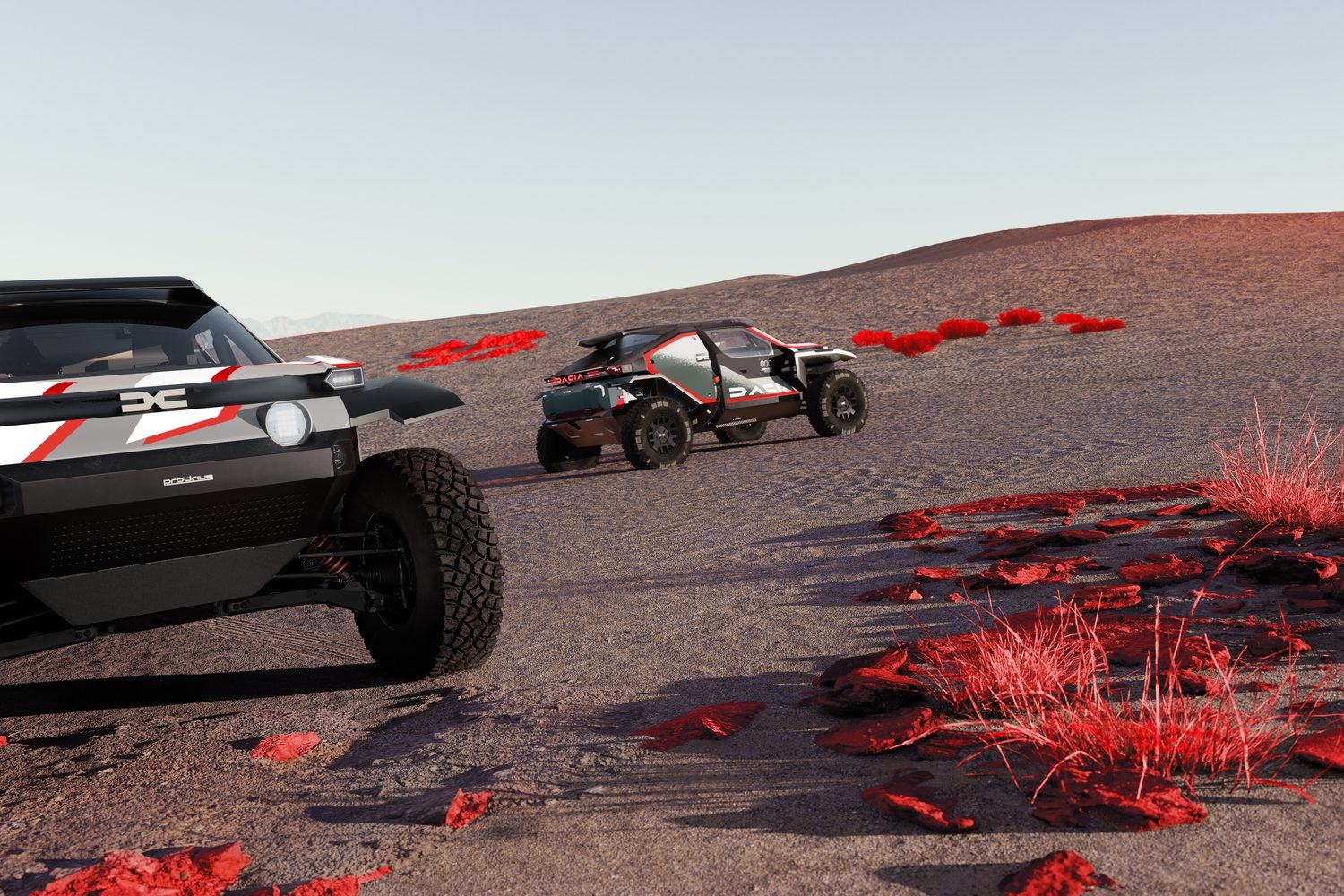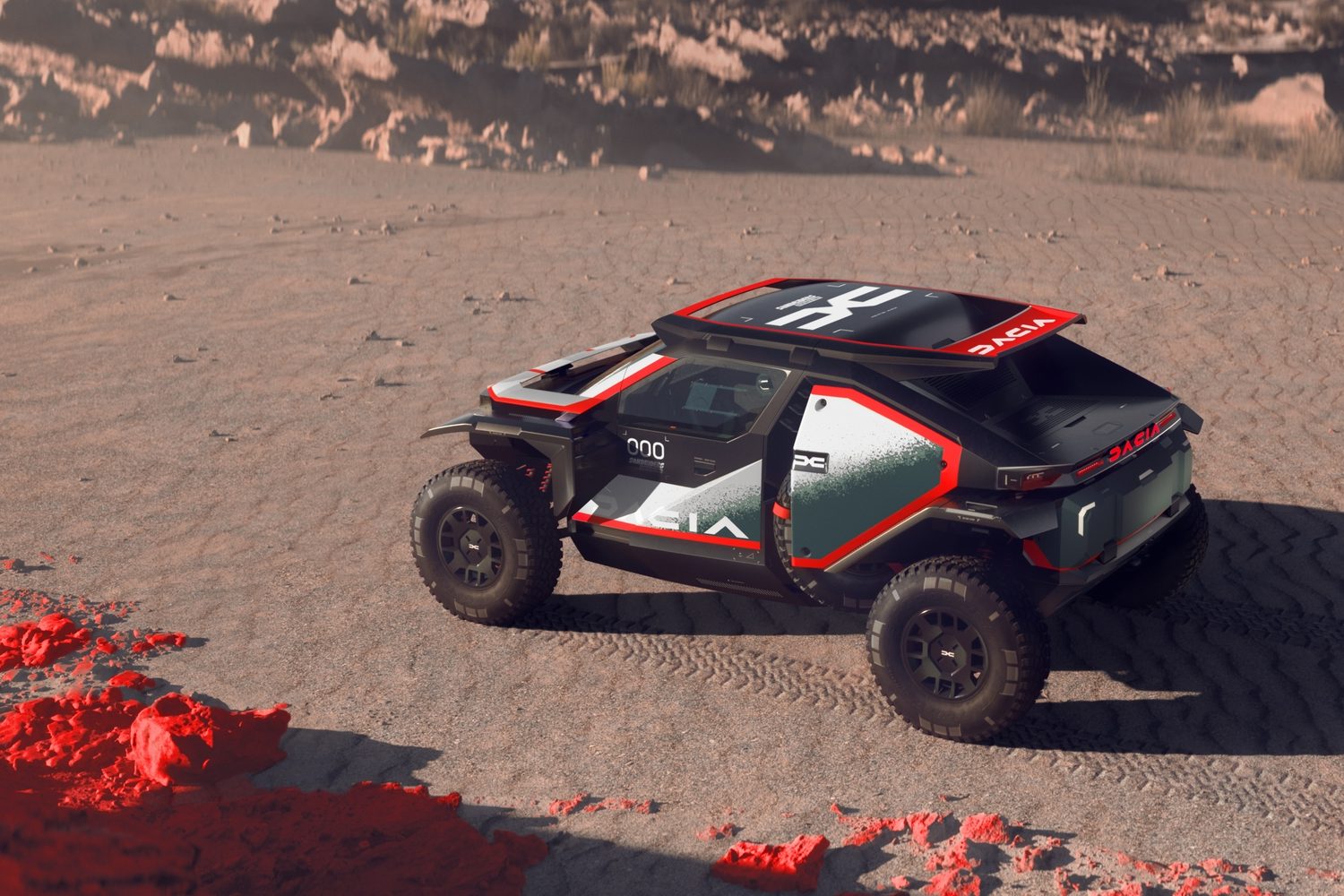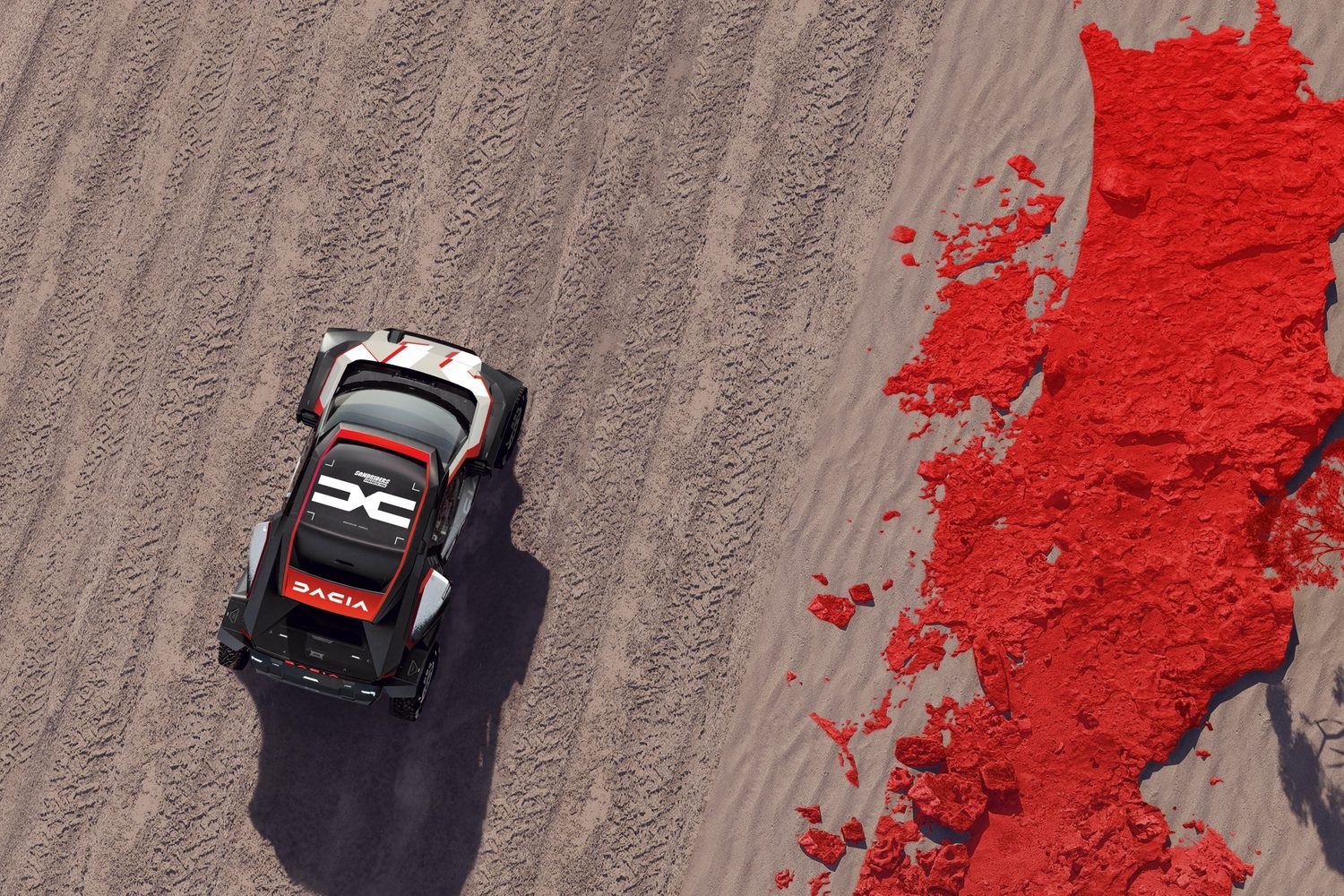Dacia is in the process of reinventing itself, moving from being a brand known for unbeatable value into one which also embraces the great outdoors. As part of that, at the 2022 Paris motor show, it revealed a concept car called the Manifesto, which was supposed to hint at where its products were heading - yet now, the Romanian brand has thrown us all a curveball by turning the Manifesto into this, the Sandrider, a full-on competition vehicle that will take on the formidable Dakar Rally from next year.
From road-going concept to sand-battering rally-raider
While the Manifesto's form of propulsion was unclear at the time, with Dacia saying it could run on anything from petrol or LPG to hybrid or even electric power, the Sandrider will be powered by synthetic fuel only, made by Aramco.
This, says the company, is a way for Dacia to test "its approach of essentialism - and in particular its commitment to affordable decarbonisation - on the toughest terrains".
The Sandrider will be homologated in the top-level Ultimate T1+ category of both the Dakar Rally and the 2025 World Rally-Raid Championship. Its technical make-up includes expertise from Dacia's parent company Renault, as well as Prodrive, the UK-based company which specialises in prepping full-on competition-spec rally cars.
For the motorsport version, Dacia has fitted only the body panels that it deems 'absolutely necessary' for the regulations, with no decorative parts allowed. Its angular shape nevertheless has a focus on slippery aerodynamics, while the raked bonnet is a device designed primarily to let the Sandrider's crew have a better field of vision of the road (or sand dunes, most likely) ahead.
Inside, the top of the dashboard is painted in anti-reflective paint, which is a technique borrowed from the aviation industry to aid forward visibility in bright sunlight, while the dashboard is modular - so that each occupant onboard can adapt the layout to whatever suits their specific needs best.
Spaceframe chassis, V6 twin-turbo engine
To cope with the rigours of both the Dakar and the rally-raid series, the Sandrider has a robust tubular (spaceframe) chassis with carbon-fibre bodywork on top. To strengthen the body further, there's a consolidated subframe and bumpers for the Dacia too.
Suspension is advanced double wishbones all round, while the Sandrider benefits from four-wheel drive as well. Power comes from a twin-turbo 3.0-litre V6 petrol engine with direct injection, making 360hp at 5,000rpm and 539Nm of torque at 4,250rpm, all channelled to the wheels via a six-speed sequential gearbox.
Despite being quite compact, measuring only 4,140mm long, the Sandrider has a massive 3,000mm wheelbase (the distance between the axles). This should make it stable on rougher terrain, including landing jumps - hence why the Dacia competition vehicle has 350mm of suspension travel - and it also blesses the car with short front and rear overhangs, features which are most useful in challenging off-road terrain.
The Sandrider's wheels are 17-inch alloys, wrapped in 37-inch BF Goodrich tyres. This is a key point of difference with the Manifesto, which was experimenting with airless, puncture-proof tyres designed to last the lifetime of the vehicle. At least the puncture-resistant characteristic is something the BF Goodrich rubber shares, given the harsh landscapes the Sandrider will travel through.
Synthetic fuel key to Dacia's aims
Beyond these, the Dacia Sandrider also features a clever onboard electrical system to ensure optimum power for all its accessories, even in the most difficult conditions, as well as Sabelt seats clothed with antibacterial fabrics to self-regulate the humidity levels. The spare wheels are uncovered for quick access, onboard tools are easy to get hold of without needing to be put in a box, and there's a magnetic plate on the exterior for holding the wheel bolts in place so they don't get lost in the sand if the crew has to change a tyre. Even the bodywork has anti-infrared pigments to stop the cabin getting too hot in the blazing heat the Sandrider will most likely be competing in.
Dacia says its engineers worked hard to reduce the weight, stripping 15kg out of the mass compared to similar prototypes, while the aerodynamics are said to result in 10 per cent less drag and 40 per cent less lift than some rival machines. Further, Aramco's synthetic fuel, which powers the engine, is made from combining renewable hydrogen with sequestered CO2 - and it's said to be compatible with existing internal combustion cars too.
The Sandrider will now undergo an extensive period of development testing in several countries around the world, before making its competitive debut in October this year at the Rallye du Maroc 2024 - the Moroccan leg of the World Rally-Raid Championship (W2RC).
It will then compete in the Dakar and all the other rounds of the W2RC in 2025. Crewing the three vehicles Dacia intends to run will be nine-time World Rally Championship (WRC) winner Sébastien Loeb with co-driver Fabian Lurquin, Spanish cross-country rally ace and eight-time Dakar veteran Cristina Gutierrez Herrero and her co-driver Pablo Moreno Heute, and finally five-time winner of the World Cup for Cross-Country Rallies and two-time champ of the W2RC Nasser Al-Attiyah, with his co-driver Mathieu Baumel.

